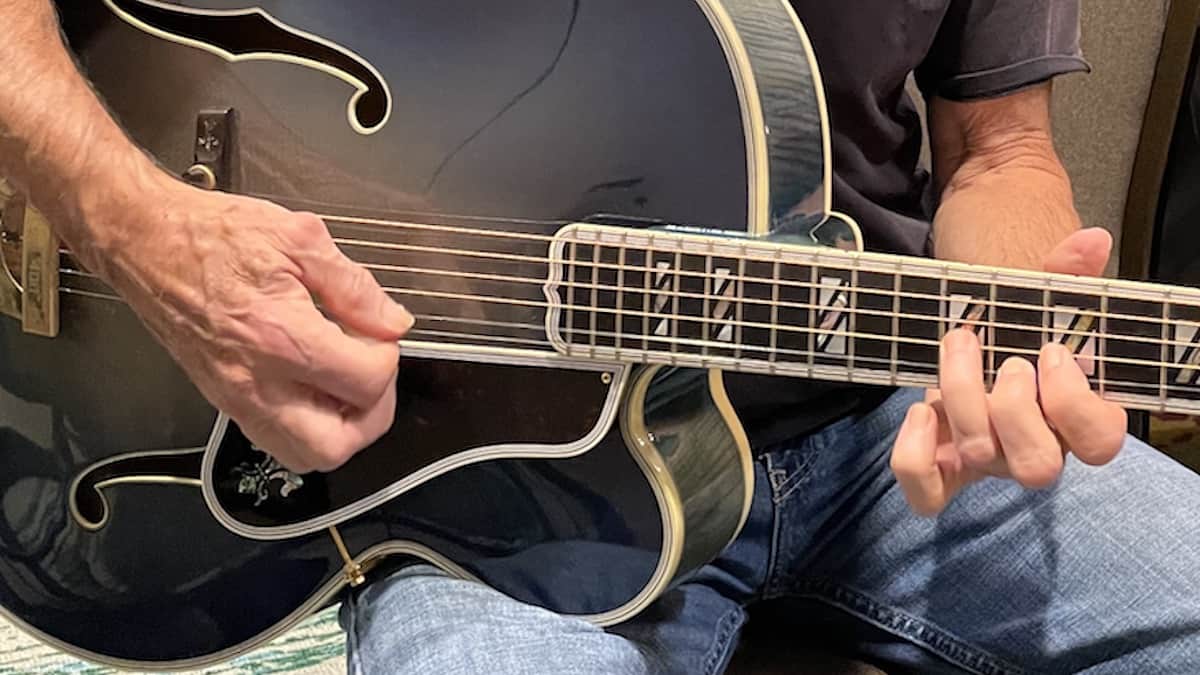Jazz Guitar Lessons
How To Use The Whole Tone Scale

The whole tone scale is one of the lesser used scales in jazz Improvisation. However, it still has some excellent improvisational applications. Chuck Anderson explains.
First, let’s identify the whole tone scale. It is a 6-note or hexatonic scale. For that reason alone, it feels and sounds odd.
The scale only has whole steps between its notes. They can be notated in many ways but all the steps are whole steps regardless of what you call the notes.
Here is an example starting on a C note. C D E F# G# Bb C. F# could be called Gb, G# could be called Ab, Bb could be called A#.
One common notation is C D E Gb G# Bb C. It’s also common to see it as C D E F# G# A# (or Bb). This will depend on the chord that supports this scale.
From a guitar fingering perspective, the whole tone scale presents issues. This is one possible reason that guitar players do not frequently use this scale.
It is one of the few scales that can not be played in a single 4-fret position. Open strings are not in consideration for this fingering discussion.
Stretches, contractions, and passes are more effective than positional playing in executing the whole tone scale.
The whole tone scale works well against Augmented triads as well as 4-part Augmented 7ths. It’s also frequently used against altered dominant 7th chords such as
7b5 or 7#5. When using this scale, you don’t have to use the entire scale. Fragments of the scale are also very effective.
Here are some common 4 note fragments. Gb G# Bb C, C D E F#, E F# G# Bb. These fragments can be 3 or 4-note phrases.
The whole tone scale can have a somewhat cliched sound because of its frequent use in soap operas. A great way to get around that is to make the #4 a 4.
C D E F G# Bb C
This is especially effective if the next chord is carrying that p4th. In Jerome Kern’s standard All the Things You Are, there is a chord used as a turn-back connecting the bridge back to the opening theme. C+7 going to Fm7. This is a perfect opportunity to use the 4th instead of the augmented with the C+7 chord.
Experiment with these sounds. They can be hard to get used to but the effort will be worthwhile!
Check out Chuck’s Store with books and music
More Lessons from Chuck Anderson –
Using A Dominant Substitution for Solos
What You Need To Know About Diminished Scale Fingerings and Chord Application
Helpful Tips With Symmetric Whole Tone Scale Fingering
Learn More About Double Third Chord Voicings for Guitar
-
Jazz Guitar Lessons2 weeks ago
New JGT Guitar Lesson: Analyzing “Without A Song”
-
Jazz Guitar Lessons4 weeks ago
New JGT Guitar Lesson: Considering “Falling Grace”
-
Artist Features1 week ago
New Kurt Rosenwinkel JGT Video Podcast – July 2024
-
Artist Features2 weeks ago
JGT Talks To Seattle’s Michael Eskenazi



















